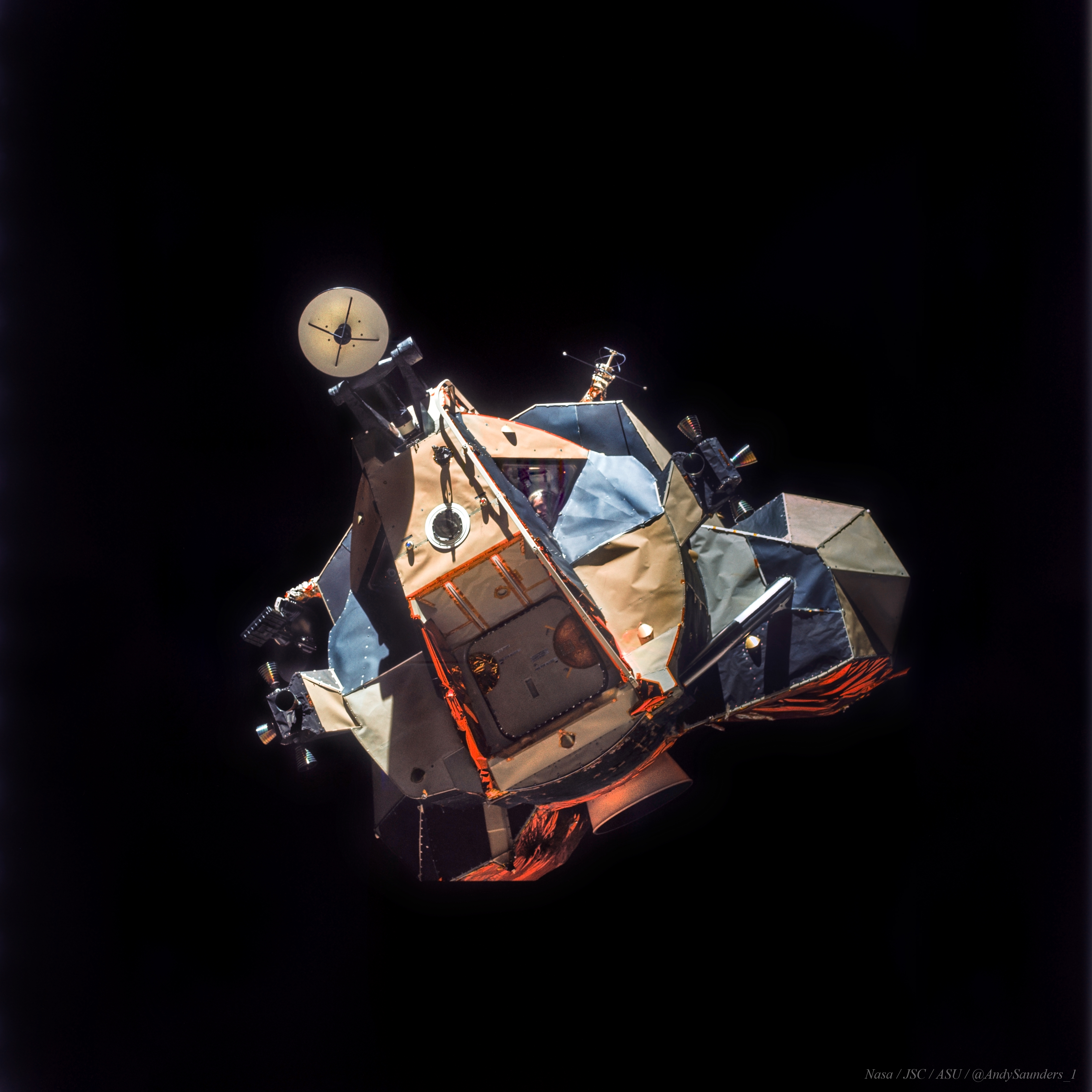
Posted on 12/14/2024 1:01:29 PM PST by MtnClimber
Explanation: Awkward and angular looking, Apollo 17's lunar module Challenger was designed for flight in the near vacuum of space. Digitally enhanced and reprocessed, this picture taken from Apollo 17's command module America shows Challenger's ascent stage in lunar orbit. Small reaction control thrusters are at the sides of the moonship with the bell of the ascent rocket engine underneath. The hatch allowing access to the lunar surface is seen at the front, with a round radar antenna at the top. Mission commander Gene Cernan is clearly visible through the triangular window. This spaceship performed gracefully, landing on the Moon and returning the Apollo astronauts to the orbiting command module in December of 1972. So where is Challenger now? Its descent stage remains at the Apollo 17 landing site in the Taurus-Littrow valley. The ascent stage pictured was intentionally crashed nearby after being jettisoned from the command module prior to the astronauts' return to planet Earth.
Tomorrow's picture: fast sand
(Excerpt) Read more at apod.nasa.gov ...
For more detail go to the link and click on the image for a high definition image. You can then move the magnifying glass cursor then click to zoom in and click again to zoom out. When zoomed in you can scan by moving the side bars on the bottom and right side of the image.

🪐 🌟 🌌 🍔
Moon landing deniers say it looks like it was put together using tin foil, construction paper, and duct tape. But it wasn’t made to look pretty and streamlined like a corvette. It was made to be as light as possible, and simple as possible so there was little that could go wrong.
Moon landing believers say the same thing. I might request something a bit more sturdy with all of the space junk floating around today.
There’s still very little space junk in the vicinity of the moon. Earth orbit is a different story, but the lander was in its interstage housing then. This thing had to both land and take off from the moon, which is a significant feat for something so small. So yes it had to be as light as possible.
Beautiful. And the last time we went to the moon.
If you saw the aluminum hull undeneath the kapton MLI, you'd find your request fulfilled.

Has an armored look to it. Sweet.
It does appear to covered with colored tarps.
Mylar for heat insulation.
For thermal protection, mostly.
Disclaimer: Opinions posted on Free Republic are those of the individual posters and do not necessarily represent the opinion of Free Republic or its management. All materials posted herein are protected by copyright law and the exemption for fair use of copyrighted works.